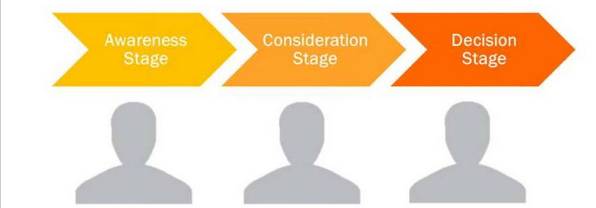 Since 85% of buying decisions are made online before interacting with a salesperson—it shouldn’t come as a shock when I tell you that you need to re-evaluate your approach: it’s more important now than ever to stop selling and start helping your prospects.
Since 85% of buying decisions are made online before interacting with a salesperson—it shouldn’t come as a shock when I tell you that you need to re-evaluate your approach: it’s more important now than ever to stop selling and start helping your prospects.
You may be telling me to wait a second and wondering if I am actually suggesting that the days of needing salespeople are gone. Absolutely not; I’m simply saying that sales have transitioned from the bartering system to sales pitch recitations and now, the historic process of selling is shifting from a deal closing mentality to a more helpful and supportive role.
Put yourself in your prospects shoes for a minute or two. Do you enjoy hearing a recycled sales pitch for something you weren’t even considering buying? How about receiving the pitch about a product that you have already done your research on? It’s apparent that traditional selling has been derailed and the power has transitioned to the buyer now.
Your agenda as a sales person should be tailored and customized to meet the unique needs of your prospect, aligned with what stage they are at in the buyer's journey. Don’t get me wrong, you may snag a surprise purchase, but chances are you're going to increase your close rate if you help them through the buying process as a trusted advisor.
3 Reasons to Start Helping Your Prospects
1. Establish Trust
As I stated previously, the buyer’s journey has significantly changed over the years, and understanding where your prospects are in the decision-making process is key to establishing trust with a prospect instead of sounding, well, salesy.
There are three main stages a prospect goes through:
- The Awareness Stage: It’s important to understand that buyers formulate the bulk of their decision based on the preliminary research conducted during the awareness stage.
- The Consideration Stage: You need to become this trusted advisor to them before they navigate through another competitor’s offer. Knowing where your prospect is in the buyer’s journey helps you sell better because you’ll find yourself fulfilling their needs as opposed to only your paycheck.
- The Decision Stage: Wait on speaking about your product or company directly, instead try asking the deeper questions that reveal their pain points, then introduce your solution to them.

2. Educate The Buyer
I’m not sure if I can stress the importance of not sounding like a broken record. Throw out the rehearsed sales pitch. Apply your industry experience and available resources with your prospect, and soon enough- they can look to you for more help.
If the entire point of the sale, other than your commission, is to fulfill a need, do you really think a blanket pitch is the best way to do that? Every prospect has a unique need and it’s your job to tell them why your product or service is different and how or even if it fits their needs.
So, how do you do that? Well, as mentioned earlier and according to HubSpot, 85% of buying decisions are made online before any human interaction; you’re best option is to be their go-to educational resource.
Don’t underestimate the power of having quality content and resources, such as blog posts, eBooks, guides, estimate calculators, tip sheets etc, readily available for your prospect—match your resources to their buyers journey.
Education doesn’t end with a quick read online; it carries over to your conversation. Once you’ve built that trust we discussed earlier, you’ll start to understand and identify their problem or need and you end up problem-solving together and prospects can often end up selling themselves.
3. Be Their Solution- Not Their Problem
Your prospects hold the buying power and control the buying process—not the seller anymore. They are aware that they have a problem or a need, it's your job to present the best possible solution.Your role as the salesman is to present how your product or service is the right solution which can result in complete buy-in from everyone else in their organization; you want to become indispensable to the prospect before, during and after the sale.
Switch out the traditional mentality of cold selling and start helping. Identify your prospects needs and what the best medium is to reach them—maybe, it’s through social media, a blog post, a resourceful email, or a video message.
Key Takeaway
The cornerstone of sales, and marketing for that matter is being able to fulfill a need and since the customer controls the buying process, being their go-to helpful resource is ideal.
So start building trust, providing them with educational resources and be their solution—not their problem.


